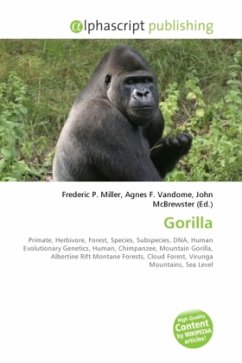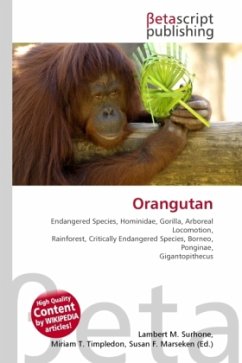
Gibbon
Versandkostenfrei!
Versandfertig in 6-10 Tagen
26,99 €
inkl. MwSt.

PAYBACK Punkte
13 °P sammeln!
Gibbons are apes in the family Hylobatidae. The family is divided into four genera based on their diploid chromosome number: Hylobates (44), Hoolock (38), Nomascus (52), and Symphalangus (50). The extinct Bunopithecus sericus is a gibbon or gibbon-like ape which, until recently, was thought to be closely related to the Hoolock gibbons. Gibbons occur in tropical and subtropical rainforests from northeast India to Indonesia and north to southern China, including the islands of Sumatra, Borneo and Java. Also called the lesser apes, gibbons differ from great apes (chimpanzees, bonobos, gorillas, o...
Gibbons are apes in the family Hylobatidae. The family is divided into four genera based on their diploid chromosome number: Hylobates (44), Hoolock (38), Nomascus (52), and Symphalangus (50). The extinct Bunopithecus sericus is a gibbon or gibbon-like ape which, until recently, was thought to be closely related to the Hoolock gibbons. Gibbons occur in tropical and subtropical rainforests from northeast India to Indonesia and north to southern China, including the islands of Sumatra, Borneo and Java. Also called the lesser apes, gibbons differ from great apes (chimpanzees, bonobos, gorillas, orangutans and humans) in being smaller and (other than most humans) pair-bonded, in not making nests, and in certain anatomical details in which they superficially more closely resemble monkeys than great apes do. Gibbons are masters of their primary mode of locomotion, brachiation, swinging from branch to branch for distances of up to 15 m (50 ft), at speeds as high as 56 km/h (35 mph). They can also make leaps of up to 8 m (27 ft), and walk bipedally with their arms raised for balance.












